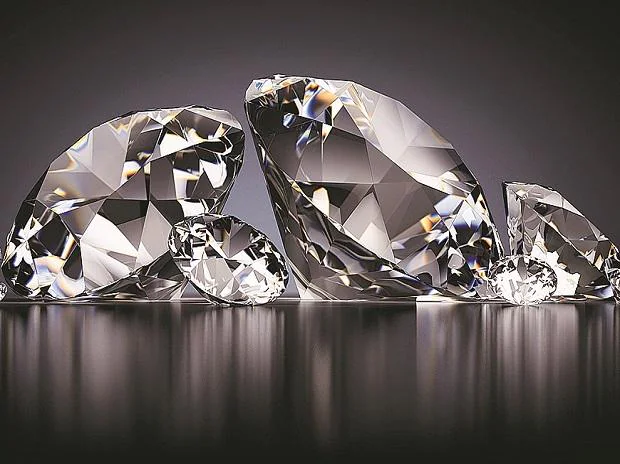What is a Blood Diamond?

Basically, a blood diamond is a diamond that has been mined in a war zone and sold to finance warlords’ activities or an invading army. These diamonds are marketed as a way to highlight the negative effects of the diamond trade in certain regions.
Angola
During the 27 year Angola civil war, the diamond trade has faced periods of difficulty. It has been a lucrative source of revenue for the National Union for the Total Independence of Angola (UNITA), but the diamonds have contributed to the financing of the civil war.
Blood diamonds are stones that have been mined in conflict zones. They are sold to political insurgents who use the profits to purchase arms and ammunition. They are also sold to war lords who can use the stones to finance other wars.
Angola’s diamond trade began under Portuguese colonial rule. Today, the diamond trade is managed by Endiama, the Angolan state-owned diamond company. Endiama has taken a position that the diamonds are not used to finance war. It has also stated its commitment to work with local authorities and mining companies.
Sierra Leone
During Sierra Leone’s civil war, the rebels used diamonds to fuel their campaign. The proceeds of the forced labor were sold on the international market, bolstering demand for a product that produced misery for Sierra Leoneans.
The rebels mutilated women and children, cutting off their hands and forcing them into rice bags. Their leaders knew that whoever controlled the diamond mines would control Sierra Leone.
Sierra Leone’s civil war is considered one of the deadliest conflicts in recent history. It claimed at least 75,000 lives and forced 500,000 people to flee. The war is over, but its effects are still felt. Sierra Leone is ranked 176th on the United Nations’ Human Development Report index. It is one of the poorest countries in the world. Its economy is heavily dependent on outside support.
Liberia
During the 14 year civil war, many towns and villages were destroyed. Despite the bloodshed, Africa’s diamond trade is still worth millions of dollars. Compared to a decade ago, the share of blood diamonds in the global diamond trade has decreased from 15 percent to less than 1 percent. However, the industry is still alive and kicking, relying on a variety of unpredictable factors, including the indomitable spirit of its diamond boys.
During the bloody war, the country’s natural resources were a major fuel for the ensuing armed conflict. In May 2001, the Security Council imposed wide-ranging sanctions on Liberia. The first major step was the lifting of the export ban on round logs and timber. The second major step was the establishment of a panel of experts to assess the impact of the sanctions.
Congo
Using fictional characters, Blood Diamonds Out of Africa aims to raise awareness about the real-life diamond trade in Africa. It uses a story from the real world to illustrate how illegal diamond trade is funded by a corrupt regime.
The story traces how a fictional company called Van De Kaap – which is based on De Beers – became involved in the illicit diamond trade. It also illustrates how this industry has helped fund a bloody civil war in the Democratic Republic of the Congo.
Blood diamonds are also called “conflict diamonds.” These are gems mined in areas that oppose a legitimate government. They are sold to finance guerrilla fighters, and are used in military actions against the government.
Ivory Coast
During the civil wars in Angola and Sierra Leone, diamonds became known as blood diamonds. These rough stones were used to fund the wars, as well as for other violent actions. These stones can be smuggled over porous borders.
Blood diamonds are mined in the Democratic Republic of Congo, Sierra Leone and Angola. The United States government released a report in 2006 on the diamond smuggling in Ivory Coast. Leonardo DiCaprio plays a mercenary who smuggles diamonds during the civil war in Sierra Leone.
In the late 2000s, conflict diamonds had not been a big problem in Liberia or Angola. They were just starting to become a problem in Zimbabwe, though. During these civil wars, rebels often raped young girls from villages and forced them into sexual slavery.
Kimberley Process
Among the major concerns about the Kimberley Process is the trade in “blood diamonds.” These stones are mined in war zones, and are sold to help finance rebel movements. The stones have a blood emblem on them, and are often difficult to distinguish from legitimate stones.
The Kimberley Process is a multilateral trade regime designed to prevent the trade in blood diamonds. The process is overseen by a coalition of major diamond exporting countries. These countries are required to certify diamonds as “conflict-free” before exporting them. They also must set up export and import controls.
The Kimberley Process has a narrow definition of conflict diamonds, which means that only a small number of these stones are available for sale on the open market. However, it has succeeded in slowing the trade in diamonds that fund conflict in Africa.




Leave a Reply